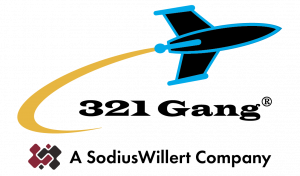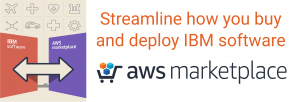Enhancing PLM with Tools Like IBM ELM and GitLab
Introduction
At Siemens Live, our team at 321 Gang had dozens of conversations with PLM professionals asking a consistent question: “How do your tools relate to what we already use in Teamcenter?” It was clear that as digital engineering strategies evolve, so does the need for information around how 3rd party ALM tools add value to traditional PLM platforms.
This isn’t unique to Siemens users. We’ve had similar discussions at Dassault events and with PTC clients who are exploring how to enhance their PLM environments with add-on solutions from both their PLM vendor and as well as 3rd party solutions.
This article was written in response to those conversations. It outlines how various categories of tools — like asset management, model-based systems engineering, requirements engineering, toolchain integration, and agile planning — extend the core value of PLM systems like Teamcenter, Windchill, or ENOVIA. By understanding where these tools fit, organizations can build a more complete product lifecycle solution.
Background
Product Lifecycle Management (PLM) systems, like Siemens Teamcenter or PTC Windchill, Dassault ENOVIA are foundational to managing product data and engineering processes. PLM systems do not cover all aspects of systems engineering, software development, requirements management, asset operations, and variability management. To address these gaps, organizations are interested in integrating specialized lifecycle tools to complement and extend the value of their PLM systems. This post explores how some of these tools — including Requirements Engineering, Systems Modeling, Asset Management, Toolchain Integration, DevOps, Product Line Engineering, and Agile Program Management — can enhance PLM across various dimensions. Each category includes examples of market-leading tools such as IBM ELM, IBM Maximo, GitLab, SodiusWillert, Pure Variants (PTC), and IBM Targetprocess. PLM vendors do have solutions in some of these areas such as Polarion (Siemens) for requirements and Cameo (Dassault) for modeling.
1. Requirements Engineering
Where it adds value in PLM: Product Definition, Validation, Change Management
PLM systems manage CAD data, BOMs, and configuration, but often lack robust systems-level requirements and traceability capabilities. Tools like IBM DOORS Next (part of IBM ELM) fill this gap by:
— Capturing structured system, stakeholder, and interface requirements.
— Supporting live linking and traceability from requirements to design and test artifacts.
— Enabling impact analysis for changes across the development lifecycle.
Example: In the aerospace industry, system-level requirements authored in DOORS Next can be traced to NX parts managed in Teamcenter and validated via IBM ETM (Test Management).
2. Systems Modeling and Simulation
Where it adds value in PLM: Concept Design, Architecture, Verification
Model-based systems engineering (MBSE) tools complement PLM by using formal modeling languages to define behavior and structure. IBM Rhapsody, for example, enables:
— Modeling of system behaviors, states, and interactions using SysML and UML.
— Early validation and simulation of complex systems.
— Code generation for embedded software systems.
Example: A transportation company models braking system behaviors in Rhapsody and connects these models to physical components tracked in Teamcenter.
3. Asset and Maintenance Management
Where it adds value in PLM: Service Lifecycle, Asset Performance, Sustainability
While PLM manages the design lifecycle, asset management tools manage real-world operations. IBM Maximo is a leading example:
— Tracks real-world performance data and maintenance logs.
— Enables digital twin scenarios when linked to PLM-managed configurations.
— Enhances lifecycle feedback from the field into design changes.
Example: A heavy equipment manufacturer links Maximo-maintained fleet data to engineering configurations in PLM to identify high-failure parts and redesign proactively.
4. Toolchain Integration and Interoperability
Where it adds value in PLM: Collaboration, Interoperability, Digital Thread
To ensure a seamless digital thread, integration platforms and connectors are essential. SodiusWillert is an example provider that offers:
— OSLC connectors to link PLM to IBM ELM.
— Model transformations between Cameo, Rhapsody, and other tools.
— Enhanced traceability across domains and tool boundaries.
Example: In a regulated industry, SodiusWillert bridges DOORS requirements with PTC Windchill, ensuring compliance and audit readiness.
5. DevOps and Continuous Integration/Delivery
Where it adds value in PLM: Software Development, Quality, Automation
Software development requires agile practices and CI/CD pipelines, which traditional PLM systems don’t support natively. GitLab integrates well with PLM ecosystems by:
— Enabling source control and CI/CD for software-driven products.
— Supporting issue tracking linked to requirements in DOORS Next.
— Providing testing traceability back to design and test cases.
Example: A medical device team manages firmware source code in GitLab and links commits to regulatory requirements in DOORS Next, managed alongside mechanical components in PLM.
6. Product Line Engineering and Variability Management
Where it adds value in PLM: Product Configuration, Reuse, Modular Design
Tools focused on variability management, like Pure Variants, extend PLM by enabling:
— Feature modeling and variant derivation.
— Configuration of systems engineering models and requirements.
— Governance for complex product lines.
Example: An automotive OEM uses Pure Variants to configure vehicle platform features across markets and propagates changes into PLM-managed CAD and BOM structures.
7. Agile Program and Portfolio Management
Where it adds value in PLM: Planning, Portfolio Management, SAFe Alignment
Agile delivery tools like Targetprocess help bridge traditional engineering and agile product management by:
— Linking features and capabilities to engineering work.
— Providing visual roadmaps and team alignment.
— Connecting user stories to requirements and test coverage.
Example: A consumer electronics firm uses Targetprocess to manage agile hardware-software release trains, integrating with IBM EWM and Teamcenter for cross-discipline visibility.
Final Thoughts
PLM solutions are essential for engineering discipline and control, but today’s complex products demand extended functionality beyond what is provided by PLM natively. By extending PLM with tools from categories like requirements engineering, asset management, DevOps, MBSE, and agile planning, organizations can build a connected lifecycle — from concept to fielded product. These integrations not only improve traceability and compliance but also accelerate innovation and reduce rework across disciplines.
If you are interested in learning more contact 321 Gang.

321 Gang | 14362 North FLW | Suite 1000 | Scottsdale, AZ 85260 | 877.820.0888 info@321gang.com

